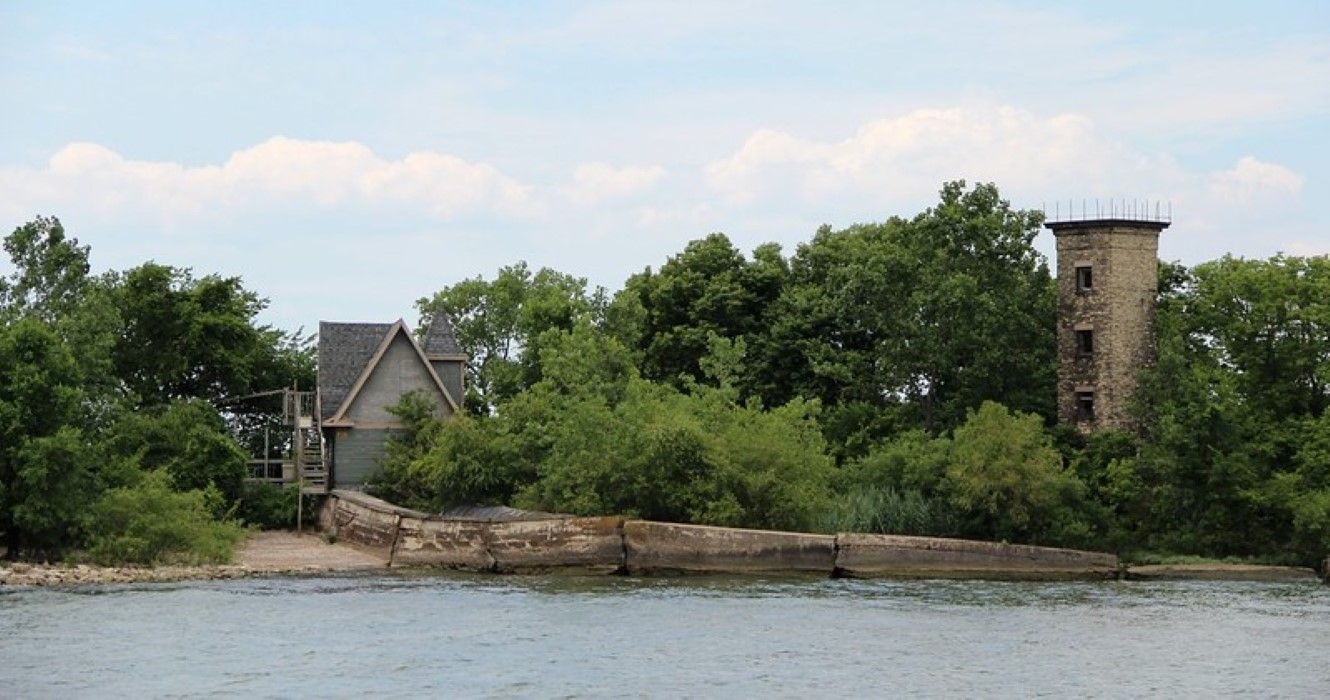Quick Links
Though unheard of by the general public, Turtle Island, small and obscure, is a fascinating destination for history buffs and explorers with a penchant for the unknown. Half in Michigan and the other half in Ohio, Turtle Island sits just northeast of where the Maumee River meets Lake Erie near Toledo.
Although it only covers 1.5 acres, the history of Turtle Island is rich and unusual. Members of the indigenous Miami people would travel to the island in search of nesting birds and their eggs before Europeans settled there. Not a single piece of archaeological evidence indicates that the Miami people ever lived there, even temporarily. Even though access to the deserted island in Lake Erie is restricted, here is what visitors need to understand about it.
Everything There Is To Know About the Tumultuous Origins of Turtle Island
The exact date of the British colonization of Turtle Island, named after Chief Little Turtle of the Miami people, is unknown. The British established a settlement there in 1794, according to Atlas Obscura and The Toledo Blade. The Port of Toledo commissioned the construction of the now-abandoned Turtle Island Lighthouse in the mid-nineteenth century. A series of storms over the years caused enough damage to the lighthouse leading to its closure for good in the early 1900s.
The United States acquired the island following the War of 1812 but saw little need for it and sold it at auction in 1827. However, the government regained possession of Turtle Island in 1831 and set aside funds to build a lighthouse close to the Port of Toledo. Once covering more than 6 acres, the island was reduced to its current size by winter storms in 1839 despite government attempts and the expenditure of tens of thousands of dollars.
Despite the erosion, the growing Port of Toledo demanded a taller lighthouse, so a 44-foot (13-m) brick tower with a beam visible up to 14 miles (23 km) away was constructed. The eastern and southern coasts of the island were fortified with a concrete breakwater in 1883 to preserve the lighthouse from further erosion. The lighthouse was deactivated, leading to the island's abandonment in 1904. By the 1920s, the lighthouse and the house had been pillaged and damaged, leaving nothing of value. There was an attempt to develop vacation homes in the 1930s, but it finally failed.
A tornado on Palm Sunday in 1965 wiped out the lighthouse keeper's home and severely damaged the lighthouse, ultimately bringing down the entire tower. The wrought-iron supporting structure is plain to see. The island became a part of Michigan after the 1836 Toledo War, which was relatively bloodless between Michigan and Ohio, although the lighthouse remained under Ohio's jurisdiction. A Supreme Court decision in 1973 divided the island in two, with the southern half moving to Ohio and the northern half staying in Michigan, establishing each a separate political entity.
Continuing Efforts In The Twenty-First Century To Revitalize Turtle Island
Recently, the island's owner reportedly intended to use the new structures as summer rentals when he first tried construction in February 2002. Since the owner lacked the required building permits to construct on the Michigan side of the island, the Monroe County authorities issued an order to halt construction. While the verdict was ultimately overturned, the buildings never got to see the light of day, so the large ice sheets that hit in the winter of 2009 demolished most of them.
Municipal authorities in Erie Township, Michigan, responsible for the state's share of Turtle Island, have planned to clear the island of the demolished buildings and any leftover debris. As a result of the high price tag, this has not happened yet. The township has been debating what to do with the island for quite some time. Not helping Turtle Island's earlier appeal to tourists is a broken-down bulldozer and a construction crane perilously close to toppling into Lake Erie on the island's western edge. In addition, throughout the summer, mosquitoes and stinging flies thrive in the stagnant water that collects on the island's eastern side due to cracks in the concrete walls.
As the island's western side is the only safe place for small boats to dock, signs forbid trespassing there. Large red letters proclaiming the Second Amendment's protection of the "right to bear arms" can be seen in one building. Evidenced by vandalism and litter, visitors to the barren island disregard the warning signs. Landing on Turtle Island is illegal without the owner's consent due to Michigan and Ohio's strict anti-trespassing laws.
Other Interesting Things About Lake Erie
Lake Erie, located between Canada and the United States, is one of the five most prominent of the Great Lakes. Because it straddles two countries and has more than 700 miles of shoreline, Lake Erie is home to some of the world's top attractions, with many accessible without leaving the United States. Kayaking on Lake Erie is a great activity for summer tourists, especially on a sunny day. As an additional perk, a trip to Lake Erie wouldn't be complete without staying at The Lakehouse Inn, a quaint resort on the water's edge that provides all the comforts of home.

